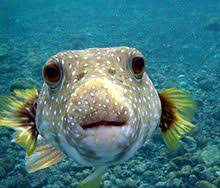The New York Times has a nice article on Marine Fisheries Trade which centers on the error rate in customs declarations. In my classes I teach:
***Stelzer quotes Harvey Monk, the Census Bureau honcho who runs the foreign trade stats, as saying customs fails to count about 10% of their forms.... well aside from the argument Stelzer is making... what this means is the data you are using may not be accurate. So is it useless? No, because the sample is generally so large the implications hold. The caution to take is if the numbers are low... it is possible the sample is poor and the numbers are erroneous.***
The article says:

There is another business, investigating specific categories of trade data to verify it for people depending on it. Feel free to forward this by email to three of your friends.
***Stelzer quotes Harvey Monk, the Census Bureau honcho who runs the foreign trade stats, as saying customs fails to count about 10% of their forms.... well aside from the argument Stelzer is making... what this means is the data you are using may not be accurate. So is it useless? No, because the sample is generally so large the implications hold. The caution to take is if the numbers are low... it is possible the sample is poor and the numbers are erroneous.***
The article says:
“We were pretty stunned by the error rate on those declarations,” Dr. Rhyne said. “Lots of things were being called marine fish that are not marine fish, like goldfish from Thailand. It looked like Singapore and Thailand were shipping a lot of marine fish to the United States, which they’re not. They’re shipping a lot of freshwater fish.”
In fact, only 52 percent of commercial invoices matched the government import forms.
There is another business, investigating specific categories of trade data to verify it for people depending on it. Feel free to forward this by email to three of your friends.
0 comments:
Post a Comment